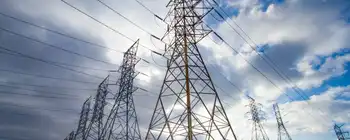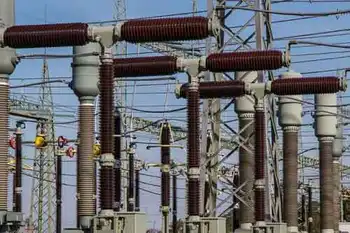Facing the realities of clean coal
SASKATCHEWAN - Alberta and Saskatchewan are determined to clean up coal and pump carbon dioxide back into the ground, two achievements that would turn the world's dirtiest fossil fuels – coal and tar-sands oil – into a climate-friendly source of energy.
That's the theory.
Edmonton-based Epcor Utilities filed two "expressions of interest" with the Alberta government in hopes of tapping funds from the province's $2 billion climate-change action plan. The power utility wants to build a new type of "clean coal" plant that turns coal into a hydrogen-rich gas. Pollutants are then removed from the gas before it is burned to generated electricity.
Epcor touted the proposed plant, based on a technology called Integrated Gasification Combined Cycle, as the "first commercial-scale near-zero emission thermal power plant in Canada." Among the pollutants that could be kept out of the atmosphere is carbon dioxide, which would presumably be captured and piped underground for permanent storage — assuming such an option existed today.
The other filing was for a project that would retrofit an existing coal plant so that up to 10 per cent of carbon dioxide could be scrubbed from its flue-gas emissions. Again, this greenhouse gas would presumably be piped underground somewhere, some day.
That's right, just 10 per cent would be captured.
Just next door, the Saskatchewan government announced it, with partners Royal Dutch Shell and the University of Regina, had created the International Performance Assessment Centre for Geological Storage of CO2 – a mouthful to be sure, but the aim is to turn booming Saskatchewan into a global centre for research around clean coal and carbon capture and storage.
These initiatives have to take place, as there are no silver bullets to fighting climate change. But we shouldn't do it to the exclusion of other options, including investments in energy storage, geothermal, biomass and solar.
The fossil-fuel folks often like to poke fun at wind, solar and conservation efforts by dismissing them as "playing at the edges." It also appears clear the federal government is putting disproportionate weight on the ability of clean coal and carbon-capture technologies to reduce Canada's greenhouse-gas emissions.
Not everyone in the industry is convinced, including Alex Pourbaix, president of energy at TransCanada Corp., a natural gas pipeline and power generation company headquartered in Calgary.
"The cost of these types of technologies are very, very uncertain," Pourbaix told investors in Toronto recently, explaining that they don't stack up well when compared to natural gas. Natural gas is costlier than coal, but emits half the CO2 and very little sulphur dioxide.
"TransCanada has been heavily involved in researching and being involved in pilot projects for gasification and carbon sequestration projects. Under a range of expected forward gas prices, I would say the vast majority of these projects, if not all, are not economic without vast subsidies from government."
It's why TransCanada is betting its future growth on natural gas pipelines and power plants. In fact, the rush from coal to natural gas – what the power industry calls "dash to gas" – has led to concerns about the drain on natural gas supplies as more generators switch away from coal.
The North American Electric Reliability Corp., a self-regulatory organization representing major utilities across the continent, says clean coal and carbon storage needs to be commercially ready by 2025 to become a viable alternative for electricity production.
The key word here is "viable." Its members, according to a report released today, cite an often-overlooked problem associated with gasification of coal and the capturing and storing of carbon: each of these processes creates its own demand for electricity.
Their electrical demand, or what's often called parasitic losses, can range from between 10 per cent and 50 per cent of power being generated. In the United States, that means if all existing coal plants were converted to clean coal and their emissions were captured and sequestered, it would require 320,000 megawatts of new electrical generation to compensate for the parasitic losses – that is, for the extra power required to capture the CO2, compress it, and pipe it safely into permanent underground storage.
Yikes. That's about 10 Ontario electricity systems. Or about 600 more coal plants. Certainly a good way to keep a dinosaur industry from going extinct, isn't it?
Related News

Ontario Energy Board Sets New Electricity Rate Plan Prices and Support Program Thresholds
TORONTO - Residential, small business and farm customers can choose their price plan, either Time-Of-Use (TOU), Tiered or Ultra-Low-Overnight (ULO) prices. The OEB has an online bill calculator to help customers who are considering a switch in price plans.
The Government of Ontario announced on Friday, October 19, 2023, that it is raising the income eligibility thresholds that enable Ontarians to qualify for the Ontario Electricity Support Program (OESP) by up to 35 percent. OESP is part of Ontario’s energy affordability framework meant to reduce the cost of electricity for low-income households by applying a monthly credit directly on to electricity…




